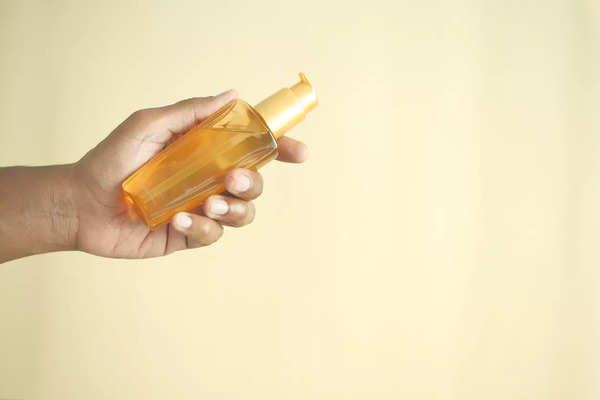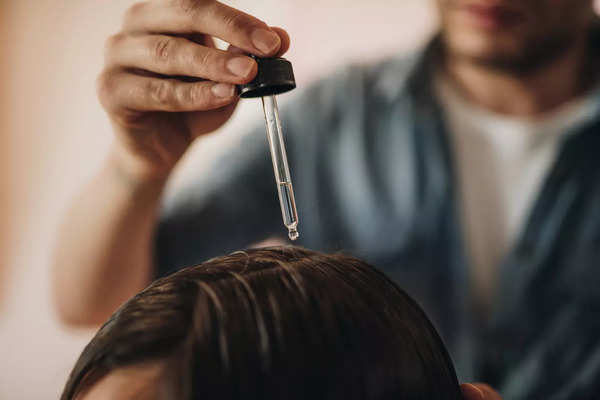
The case for hair oil
Traditional wisdom and benefits
Historically, hair oils have been used to address a multitude of hair problems. Oils such as coconut, argan, jojoba, and olive oil are praised for their ability to:
Nourish and moisturize: Oils can penetrate the hair shaft and provide deep hydration, especially for dry and brittle hair.
Prevent breakage: By reducing friction, oils help to minimize breakage and split ends.
Promote hair growth: Some oils, particularly castor oil, are believed to promote hair growth by nourishing the scalp and improving blood circulation.
Enhance Shine: Oils add a natural sheen to hair, making it look healthier and more vibrant.
Protect against damage: Oils can form a protective barrier against environmental damage, such as UV rays and pollution.
The case against hair oil
Despite these benefits, some experts and users have reported adverse effects from using hair oils:
Clogging of pores
One of the significant arguments against using hair oils is that they can clog pores on the scalp. When oils build up, they can mix with dead skin cells and debris, potentially leading to scalp issues such as acne, dandruff, and even hair loss.

Weighing down the hair
Oils can be heavy, particularly for those with fine or thin hair. They can weigh down hair, making it look limp and greasy rather than shiny and voluminous. This effect can be especially pronounced if too much oil is applied or if it’s not thoroughly washed out.
Ineffective for certain hair types
Not all hair types respond well to oil. For example, individuals with naturally oily scalps may find that adding more oil exacerbates the problem, leading to greasy, flat hair. Similarly, some people with curly or textured hair might find that certain oils are too heavy and can lead to product buildup.
Finding the balance
So, is oil the biggest enemy of your hair? The answer is nuanced and depends on various factors, including hair type, scalp condition, and how the oil is used.
Using oils wisely
Choose the right oil: Not all oils are created equal. For instance, lighter oils like argan or grapeseed oil are better suited for fine hair, while thicker oils like coconut or castor oil can benefit those with dry or curly hair.
Moderation is key: Using a small amount of oil can provide benefits without the drawbacks of greasiness or buildup. A few drops are often enough.
Apply correctly: Focus on the ends of your hair rather than the scalp. This method can prevent clogging pores while still nourishing the hair.
Regular washing: Ensure that oil is thoroughly washed out during your regular hair-washing routine. This helps prevent buildup and keeps the scalp clean and healthy.
Scalp health: Consider your scalp’s needs. If you have a naturally oily scalp, you might benefit more from lightweight oils or oil-free products.
Aishwarya Rai Bachchan and Abhishek Bachchan’s Viral Video from Ambani Event Sparks Internet Reactions
Alternatives to traditional oils
For those who find traditional oils problematic, there are alternatives that can provide similar benefits without the potential downsides:
Leave-in conditioners: These products can moisturize and protect hair without the heaviness of oil.
Serums: Hair serums are often lighter than oils and can provide shine and protection without weighing down the hair.
Hair masks: Weekly hair masks can offer deep conditioning and nourishment, similar to oil treatments, but are washed out immediately, reducing the risk of buildup.
While hair oil can be incredibly beneficial, it is not universally suited for everyone. For some, it might indeed act as an enemy, causing issues like clogged pores and greasy hair. For others, it remains a valuable ally in the quest for healthy, shiny hair. The key lies in understanding your hair type and scalp condition, choosing the right products, and using them in moderation.
Ultimately, hair care is highly individual. What works wonders for one person might not be effective for another. It’s important to listen to your hair and scalp’s needs, experiment with different products and routines, and find the balance that leaves your hair looking and feeling its best.

